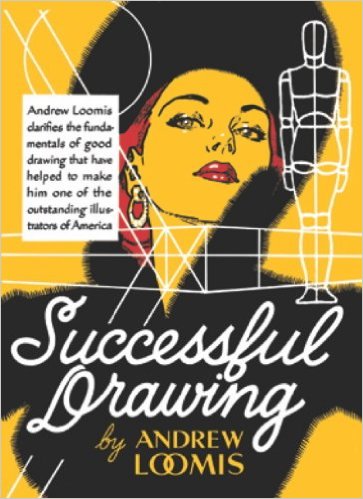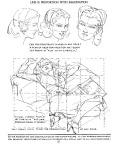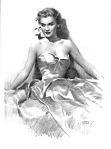Meet Andrew Loomis, illustrator
My favourite drawing instructor and artist in general is Andrew Loomis. He was an American illustrator who worked at the tail end of the Golden Era of illustration. His contribution of elegant illustrations were used in commercial ads, book covers and magazines, but he was also a highly respected instructor of art during his career. The observations and facts about technical illustration and drawing which Loomis made throughout his career were collected in a series of books from 1939 to 1961. These books cover every facet of illustration theory and technique.
The books themselves are indespensible resources and should be owned individually, but that being said I might add that some of the concepts within the breadth of the works are difficult to integrate for general readers as well as for students of art. Thus, to help clarify these essential concepts of drawing, I have endeavoured to develop this blog which I have entitled Understanding Loomis.
My purpose is twofold here, the lesser of which is to generate a companion piece to Loomis’ writing for other artists to read at any level. The primary purpose of this blog is for my own study, so that I may come to fully integrate the concepts which Loomis is explaining in his books within my own mind.
Successful Drawing

I will begin the systematic review and breakdown of Andrew Loomis’ writing with the late-entry publication entitled Successful Drawing, from 1951. This book appeared chronologically near the end of Loomis’ career, and although he started coalescing his concepts and discoveries into book format at the end of the 30’s, Successful Drawing is a good place to begin. This title was re-released in a slightly altered form in 1961 as Three-Dimensional Drawing.
The reason I will begin here is that I have found Successful Drawing to have the best balance between drawing fundamentals and art theory. It should be said at this point that readers will find art theory to be more emphasized within the writing of Andrew Loomis than is commonly found in most other instructional works. The principle which Loomis takes as a starting point is that there is no division between theory and practice, and that to harbour a vague understanding, or a contradictory theory of art will only lead an artist into struggles which should have been avoidable.
The sense of life he has is positive, objective and technical to the point of mathematic. I find this approach to be a very, very welcome panacea to the confused mindset of artists steeped in Fine Art-school ideology and those unquantifiable art theories which place their emphasis on expression, creativity and “meaning”. Loomis focuses on the tangible and mechanical elements of art which -as he promises- can be learned, and will yield a correct representation of reality. This is most valuable in that these are terms which an artist can control and can learn through attentive practice.
Next posting I will commence with the actual breakdown of Loomis’ writing, where we will begin with his outline of the fundamentals needed to start on the journey toward Successful Drawing.
I hope that you can join me. In the mean time, enjoy these samples from Andrew Loomis.





This looks very intriguing. I look forward to joining you on this discussion of Loomis’ work!
LikeLiked by 1 person
Thanks, I will be making a daily post as part of my practice in the AM. There is so much to cover with Andrew Loomis.
LikeLike